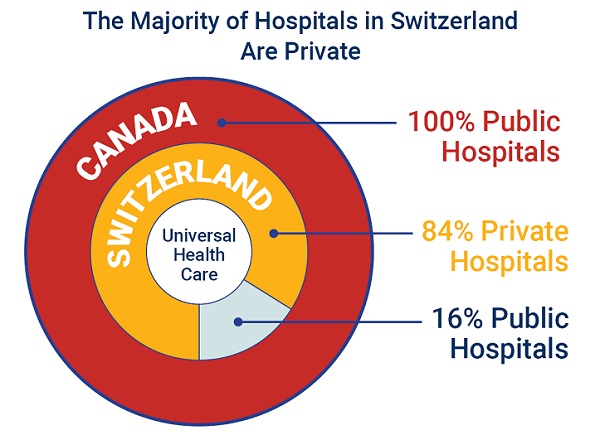Also Interesting
Property Markets in Alberta and B.C. Show Strong Momentum

Calgary and Edmonton have both seen a steady level of property sales in recent months.
People who want to buy homes have focused on the location of each property. In both cities, there are options in both new developments and established neighborhoods. Pricing has stayed stable compared to some Canadian markets. Buyers often look at access to schools, parks, and workplaces as they make their choices. New construction projects have brought more units onto the market in some areas.
Condos and single-family houses both see attention. Some buyers prefer newer houses on the outskirts, while others choose homes near central districts. Demand for rental units has risen in many areas of Alberta as well. In most markets in this province, there are properties at a range of different price points.
Strong Buyer Interest in British Columbia
In Vancouver and other large cities in British Columbia, property purchases have stayed at a high level. Buyers study the location, price range, and future changes in each community before making an offer. Areas close to public transit, work, and schools often get the most interest. The supply of homes for sale can be limited, especially for single-family houses near the city center.
Home builders in some parts of British Columbia continue to start new projects. Suburban towns near Vancouver have seen people move from central communities as they seek different price points and more space. Most sales activity comes from a mix of local people and those considering a move from other regions.
Comparing Regional Housing Trends
Markets in Alberta and British Columbia have shown strong sales volumes in both urban and suburban neighborhoods. Buyers in Calgary and Vancouver have sought properties for their location, price point, and plans for future development. In comparison, other cities like Montreal and Ottawa have seen less change in housing demand.
Toronto homes for sale draw buyers based on inventory, neighborhood perks, and pricing. Properties in these areas often attract people considering options across Canada, leading to more balanced market activity in each region.
Influences on Current Demand
The activity in Alberta and British Columbia is shaped by different factors. Economic stability, employment rates, and population growth all play a role. In Calgary, job growth and a reasonable cost of living make the city attractive for new arrivals. Many companies offer positions in energy, construction, and services. This consistent employment keeps more people interested in both renting and buying homes.
British Columbia sees demand for property due to its location near the Pacific, a large service economy, and its climate. Many buyers see homes close to workplaces and public amenities as valuable. The limited space in some Vancouver neighborhoods can lead to more competition for each listing. New government policies on housing and lending may also affect the way buyers choose their properties.
Supply Factors and Market Balance
Builders respond to demand with new projects in both provinces. In Alberta, building new single-family homes or townhouses is common, especially in the outskirts of cities. This can help stabilize prices and supply for buyers who want new properties. By contrast, British Columbia often sees apartment and condo developments due to limited land near city centers.
Inventory levels can still be tight in some parts of both provinces. A limited number of new listings can cause more competition and keep prices firm. In some suburbs, developers offer new construction, while some older core neighborhoods have homes that are renovated or improved. The mix of these options shapes buyer and seller choices week by week.
The Effect of Amenities and Community Features
People choose homes not just for size or price, but also for access to amenities. In Alberta, neighborhoods with nearby schools, healthcare clinics, and parks see steady sales. In British Columbia, walkability, transit options, and access to local shops are important to people buying properties.
Communities that blend these features with reasonable prices often see more interest. Safety, commuting time, and local services also play roles in how buyers look at each listing. Some buyers prefer new developments that offer updated services and features, while others seek established communities with a track record of maintenance and stability.
Urban and Suburban Patterns
Both Alberta and British Columbia show activity in city centers and outer areas. In Calgary and Edmonton, downtown condos appeal to people who want to live near work or entertainment venues. In outer districts, large homes and yards attract buyers who want space and quiet.
Vancouver shows a similar split. Central neighborhoods offer easy access to employment and culture, while areas further out often mean lower prices and larger lots. Over time, people may move from one type of neighborhood to another as their priorities change.
A Look at Pricing and Future Supply
Property prices in Alberta have not risen as quickly as in some other Canadian regions, making the market accessible for many first-time buyers. British Columbia sees higher average prices due to demand and restraints on new supply, especially for new houses in city centers.
Plans for more new units are in place in several Alberta and British Columbia cities. This includes condos, single-family houses, and mixed-use buildings that can serve a range of buyers. Future building projects may affect future prices and supply levels if they proceed as planned.
Summary
Property markets in Alberta and British Columbia continue their activity due to local demand, supply, and economic factors. Buyers in Calgary and Vancouver pay close attention to location, price, and development plans. Cities in Alberta and British Columbia offer a mix of options for people seeking different types of homes at various price points. Local amenities, market inventory, and employment opportunities all shape the activity in these property markets. As local conditions change, builders and buyers keep adjusting their decisions according to their most practical needs and preferences.
Also Interesting
The Best US Hopes for Wimbledon 2025: Who Could Break the Curse at SW19?

For American tennis fans, Wimbledon has turned into a tournament of nostalgia and heartbreak. The days of Pete Sampras being the biggest name on grass feel like a lifetime ago – and while Serena Williams has done well for the U.S., she’s now out of the picture. And in recent decades, the men’s title hasn’t been lifted by a US player since Sampras back in 2000 – a quarter of a century ago, no less.
But as we start gearing up for Wimbledon 2025, there’s hope in the air. There’s a whole new generation of American talent—both men and women… And it’s finally starting to break through. With some pretty strong grass-court performances over the past year, there’s actually a bit of hope that maybe the stars and stripes could do it again… finally.
So, let’s take a closer look at the top U.S. contenders for Wimbledon 2025.
Taylor Fritz
When it comes to the American men, Taylor Fritz has to be the most consistent threat. Currently ranked inside the ATP top 10 – at number 4 no less, he’s matured into a well-rounded player, with a game suited perfectly to grass courts. He has a powerful serve, a clean ball-strike, and super sharp net play… and he could be dangerous at Wimbledon.
Last year he made it to the quarters before going out in a five-setter – and this time around, he’ll want to get at least one step further. Obviously, it won’t be easy going against the likes of Carlos Alcaraz and Novak Djokovic—both of whom are the names dominating the Wimbledon betting odds—but if the draw opens up, he could enjoy a serious run.
Ben Shelton
Fritz might be the reliable American option, but then there’s Ben Shelton – very much a wildcard. The 22-year-old exploded onto the scene with a deep run in the US Open in 2023, and while grass isn’t necessarily his natural surface, he’s nothing if not adaptable. And with his huge serve and fearless playing style, he’s a complete nightmare to go against in best-of-five tennis.
Shelton showed plenty of promise in the 2024 grass court season – with strong showings at Queen’s Club and Halle. And if he gets hot, we wouldn’t be too surprised to see him crash the quarterfinals or beyond. If you’re looking for a dark horse, he could be your guy.
Sebastian Korda
Of all the American men, Sebastian Korda is arguably the best suited for a grass game. Tall, elegant, and technically impressive, it’s almost like he was built for Wimbledon. He managed to make it to the fourth round in 2021 but has struggled with injuries ever since. However, if he’s fit and healthy, his court coverage and touch could cause issues for even the best player.
If he is in top form going into Wimbledon 2025, he could surprise some of the higher seeds. He’s already beaten some of the top-10 players on grass, and he’s someone with the mentality to perform well even on the biggest stage.
Coco Gauff
Let’s look at the women… and here we have Coco Gauff, who is unquestionably our biggest Wimbledon hope. Still only 21 years of age, she already has years of Grand Slam experience under her belt—and she even has a US Open title to her name. Her big breakthrough came at Wimbledon back in 2019 when she famously beat the legendary Venus Williams… at just 15 years old. Since then, she’s just gotten even better, especially on faster surfaces.
Her serve is one of the best on the WTA Tour, and her athleticism makes her a tough contender out on grass. With the main competitors being Iga Świątek, who struggles on this surface, and Elena Rybakina, who lacks consistency, this could potentially be her year.
Madison Keys
And we really shouldn’t count out Madison Keys – the 29-year-old who still has the power game to do serious damage on grass. And she got all the way to the Wimbledon quarter finals as recently as 2023.
Her huge serve and flat groundstrokes always work well on grass… and with her experience, she could get a long way if the competition goes her way. Wimbledon is about fearless aggression… and Keys has that by the bucketloads. She may not be the favorite – but savvy fans know that, if the form and conditions are right, she could make it at least to the semis.
Will it be the year for the US at Wimbledon? It’s hard to say… and we’d definitely need a bit of luck on our side. But at Wimbledon, anything is possible!
Also Interesting
The Historic Beginnings of Roulette

Roulette is one of the most popular pastimes among casino enthusiasts, allowing players to engage in a social game that has straightforward rules. Although its common to see roulette being played by both beginners and high-rollers in casino environments, many people aren’t informed about how roulette actually was invented and how it flourished over the years. With this in mind, let’s explore the historic beginnings of roulette, from its inception to the current day.
The Origins of Roulette
The history of roulette goes back many years to the 17th century. The Roulette wheel was invented by a French physicist, inventor, and mathematician named Blaise Pascal. The name roulette comes from the French word, which translates to little wheel. In many ways, the creation of roulette was down to chance as Pascal was actually planning to invent a perpetual motion machine. Although Pascal’s invention wasn’t supposed to culminate in the roulette wheel, it made its way into the first casino in Paris in the late 1700s with it first being mentioned in historical records in the same period.
By the early 1800s, roulette had become a popular game in Paris casinos. The original version had both a single zero and a double zero, which gave the casino a bigger advantage. But in 1842, two French brothers called François and Louis Blanc, created a new version with just one zero. This change made the odds better for players and helped bring more people to the game.
In the earlier centuries, roulette wasn’t just tied to casino related activities as it was also a way for people to bond. In particular, the game was favoured by the European aristocracy and elite social circles who enjoyed the exclusivity of the game. It was common for roulette tables to be found in opulent locations, where high-class individuals would gather to share news about their day while also testing out their roulette skills. As the years went on, roulette was deemed a lavish activity that grouped people together, often played while sipping on fine wines, champagne and brandy and sampling a cheese platter. This trend translated to the United States, with roulette making its way to America in the 19th century where it would
become a permanent fixture in land-based casinos.
The Premise of Roulette
Roulette is a casino game involving a small ball and a spinning wheel. The wheel has numbered pockets, and players can bet on a single number, a group of numbers, a colour (red or black) or whether the number will be odd or even. Prior to rolling the ball, people place bets on what number will come up by laying down chips on a betting mat, the precise location of the chips indicating the bet being made. Once bets are placed, the dealer spins
the wheel and drops the ball. If the ball lands on a number or colour a player chose, they will win.
Although roulette is mostly tied to luck, some players incorporate betting strategies to try and manage their money. Some of the most common systems include the Martingale strategy, where players double their bet after each loss in a bid to recover losses with one win. Others use patterns like the Fibonacci or D’Alembert systems. These methods don’t change the odds, but they help players control how they bet during the game.
The Evolution of Roulette
Although roulette had very humble beginnings, it has transformed significantly, integrating seamlessly with the digital landscape. In fact, roulette has been adapted in line with the digital era, with its movement to online platforms. Casino sites allow players all over the world to engage in roulette on their smartphone without having to physically leave their home. However, these sites don’t just have basic and classic versions of the game. Online
platforms and software providers have launched several innovative and unique variations of roulette and have expanded the features of this game to include bonus multipliers, fast-paced gameplay, or optional side bets. Online roulette offers various versions of the game, including European, American and French roulette. The digital format has also introduced live dealer roulette which is made possible by modern technology such as virtual and augmented reality, where players can interact with a real dealer through an immersive video stream.
In conclusion, roulette has gone through a notable journey from its historic beginnings to its modern digital transformation. Although roulette was invented in the 1700s, it still holds a universal appeal, especially as it becomes more popular on virtual platforms. So if you want to try out roulette and aren’t located near a physical casino, why not go online and play at a reputable casino?
-

 Health2 days ago
Health2 days agoRFK Jr. appoints Robert Malone, Martin Kulldorff, other COVID shot critics to overhauled CDC vaccine panel
-

 Alberta2 days ago
Alberta2 days agoOil prices are headed for a hard fall
-

 Business2 days ago
Business2 days agoOur addiction to dairy supply management is turning Canada into a trade pariah
-

 Business2 days ago
Business2 days ago84% of Swiss hospitals and 60% of hospitalizations are in private facilities, and they face much lower wait times
-

 Business2 days ago
Business2 days agoThe carbon tax’s last stand – and what comes after
-

 Bruce Dowbiggin2 days ago
Bruce Dowbiggin2 days agoCanadians Thinks America Owes Them. Trump Has Other Ideas
-

 conflict1 day ago
conflict1 day agoIsrael strikes Iran, targeting nuclear sites; U.S. not involved in attack
-

 Business1 day ago
Business1 day agoTrump: ‘Changes are coming’ to aggressive immigration policy after business complaints



